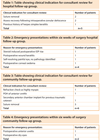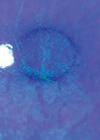Ophthalmology archive for October 2014
A look into the IOL space
Advances in the design and performance of intraocular lenses (IOLs) continue to be driven by demand for better outcomes, presbyopia correction and spectacle independence, alongside a better understanding of the dynamics of the crystalline lens, newer theories of accommodation and...
Changing the post cataract surgery review pathway – is patient safety compromised?
Cataract surgery continues to be the most commonly performed elective surgical procedure in the UK, with an annual rate of approximately 4150/100,000 people over the age of 65 accounting for a significant proportion of the surgical workload of most ophthalmologists...
Is lens constant optimisation for IOLMaster indispensable in order to achieve a good refractive outcome?
A study of refractive outcomes following cataract surgery was carried out with the aim of comparing the postoperative refractive outcomes against Royal College of Ophthalmologists standards and to determine the extent of association between accuracy of intraocular lens (IOL) power...
Therapy for limbal stem cell deficiency: cell fate after limbal stem cell transplants
“The beauty of scientific research lies in that the search for answers often yields yet more questions.” A large body of evidence points to the corneoscleral limbal location as the repository of putative epithelial stem cells [1]. Thoft proposed the...








